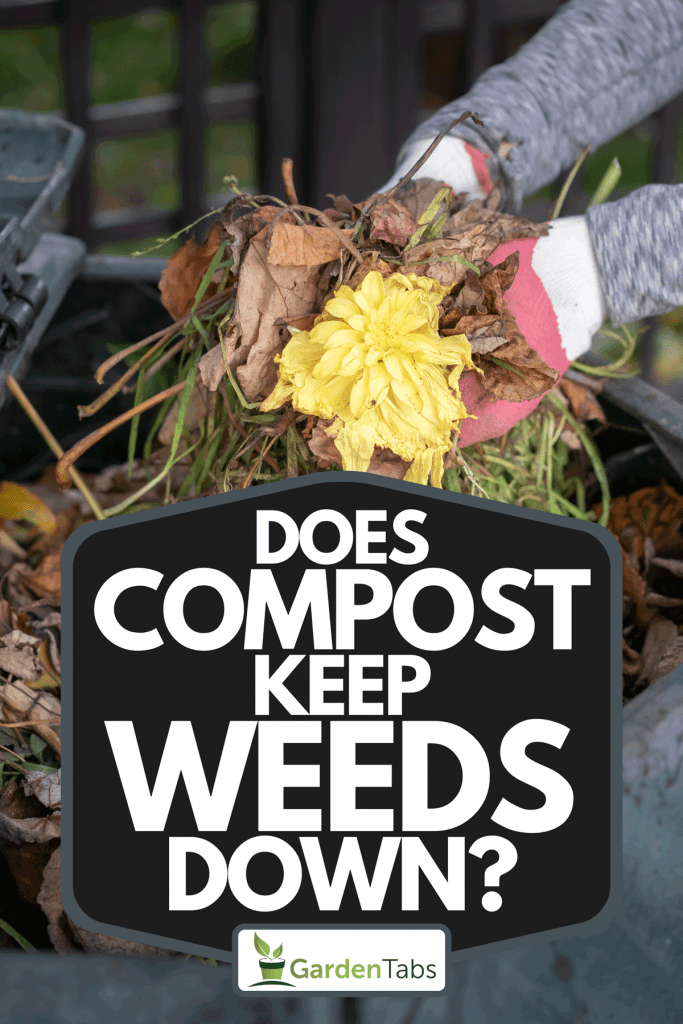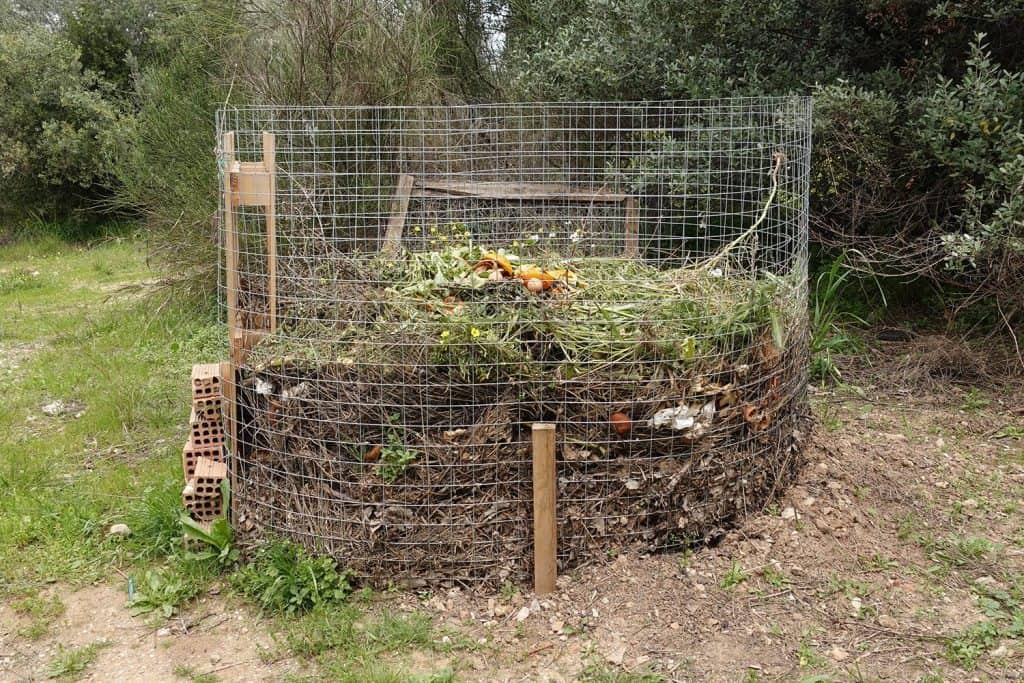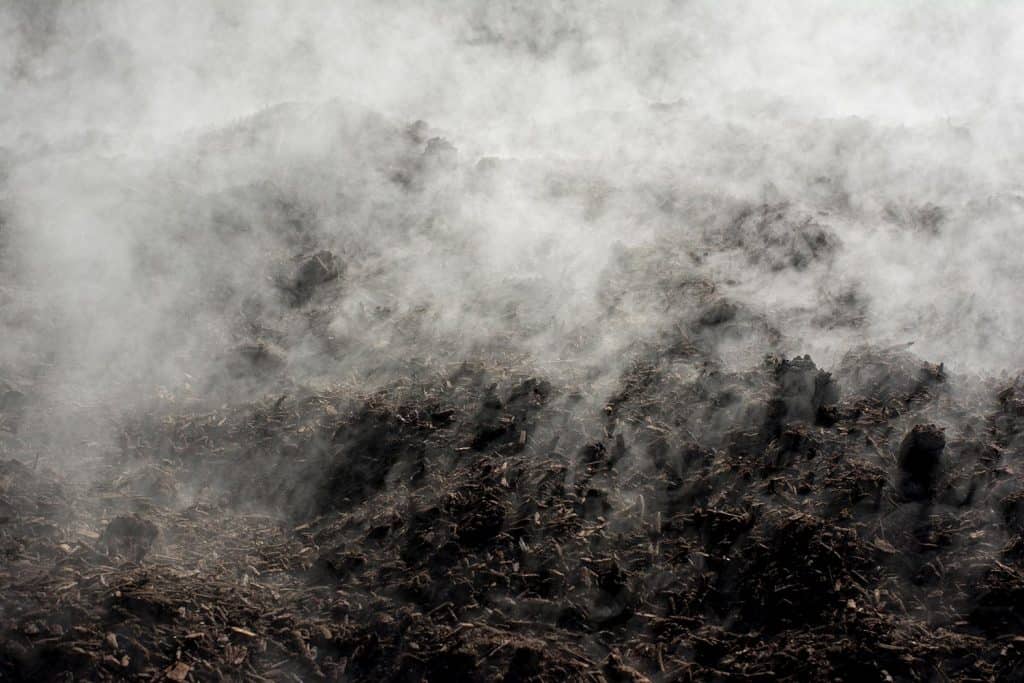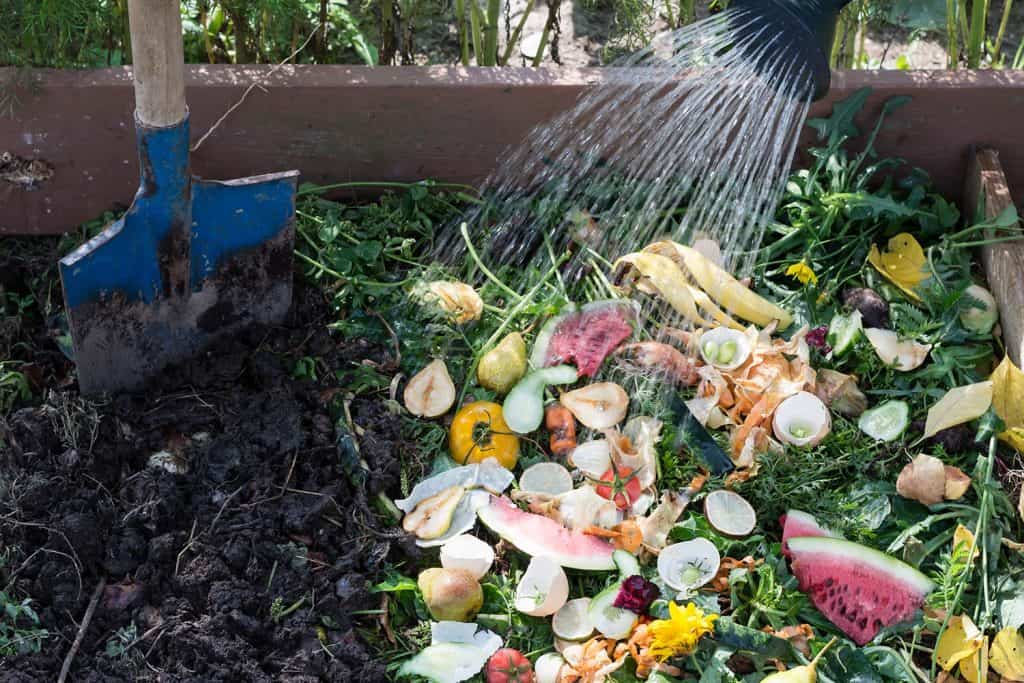This article was reviewed by Steve Snedeker, professional landscaper.
Are you sick of pulling weeds from your garden? If so, you may have heard that composting will keep them down.
We were a bit skeptical, so we set out to find the truth behind composting. We scoured the internet for reputable sources and outlined our findings below.
Compost does, indeed, keep weeds down. However, there is a major catch. The compost must be precisely maintained, reaching a temperature of at least 140 degrees Fahrenheit, for it to work its magic in your garden and/or yard.
Keep reading to learn how to properly manage your compost for weed prevention, whether mulch or compost is better, and other ways in which to kill and prevent weeds from sprouting.

Does Compost Keep Weeds Down?
Compost, if properly maintained, will prevent weeds from growing in your garden. It also provides a range of other benefits, including rich nutrients, improved texture, soil aeration, and better water retention.
However, products that are not composted properly can wreak havoc on a garden, contaminating your fruits and vegetables and causing excessive weed growth.

How To Properly Compost
Composting may seem like a fairly straightforward act; however, many variables can alter the overall effectiveness. You can't just continuously dump kitchen waste into your compost bin and expect it to be ready within a few weeks.
The following conditions must be met to create proper compost material:
- Temperature of at least 140 degrees Fahrenheit
- pH level between 6 and 8
- Oxygen content of 5% or above
- Moisture content between 40% and 60%
- Carbon/nitrogen ratio between 25:1 and 40:1
1. Temperature of at Least 140 Degrees Fahrenheit

In order to kill any weeds or weed seeds, the compost mixture needs to reach a temperature of at least 140 degrees. Anywhere between 140 and 170 degrees is ideal.
Sometimes, the inside of the pile will be hotter than the outside edges and top layer. To evenly distribute heat, stir the mixture thoroughly while it is in the active phase.
By following steps 2 through 5, you can ensure your compost maintains temperatures high enough to kill weeds.
You can use a soil and compost thermometer to check the temperature of your pile. You can also tell if it's hot enough by disturbing the surface matter. Doing so will release steam when the contents are hot enough.
You can purchase a soil and compost thermometer on Amazon.
2. pH Level Between 6 and 8
Upon first glance, this list seems like an impossible science experiment. However, it really isn't difficult to maintain a proper pH balance in your compost bin.
Utilizing a pH meter is the easiest and most accurate method for checking the pH balance.
If you don't have access to a meter, you can tell if the pH balance is off by the way your compost smells.
Compost bins should not smell rotten or stinky. Instead, they should have a fresh, earthy smell. If the balance is off, you can correct it by trying a couple of different things.
First, check to see if your compost mixture is overly wet. It should be moist but not soggy or flooded. Try adding less water each time and watering less often.
To fix the water content, let the mixture dry before adding water again. Adjust your watering habits until you reach the proper consistency and smell.
If your compost pile is not overly wet, you may need to mix it up. To do this, you can use a pitchfork or shovel to scoop the contents from the bottom, replacing them on the top until adequately blended.
If neither of those steps works in adjusting the pH level, you can add lime to your compost.
You can purchase lime on Amazon.
3. Oxygen Content 5 Percent or Above
To maintain a proper oxygen content, you must keep the compost pile aerated. To accomplish this, mix and turn the contents, bringing the bottom ingredients to the top.
Don't forget to move the contents from the side of the pile into the middle. While turning, make sure to break up any clumps you may find.
You can purchase a compost aerator tool on Amazon.
4. Moisture Content Between 40% and 60%
As with the pH level, you can use a meter to check the moisture content of your compost pile. You can purchase 3-in-1 meters that check the pH level, moisture content, and sunlight.
To maintain a moisture content between 40 and 60 percent, water your pile regularly. However, be careful not to over-water.
The contents should be moist without being soggy. Do not soak it to the point that water drains from the bottom of the pile/bin.

5. Carbon/Nitrogen Ratio Between 25:1 and 40:1

Achieving the proper carbon to nitrogen ratio is not as difficult as it seems. All you need to do is make sure you balance the amount of green matter and brown matter you place into your bin/pile.
Green matter consists of things such as vegetables, fruits, and lawn clippings. Brown matter consists of items such as leaves, hay, and newspaper clippings. Alternate the layers appropriately with an even amount in each layer.
Adding Manure to Compost

While manure can greatly benefit gardens, it is important to use it properly. Not only will poorly composted manure sprout weeds, but it can also be deadly to humans, causing diseases such as E. Coli and Salmonella.
In order for all harmful bacteria to die, your compost must meet the minimum temperature requirements of 140 degrees Fahrenheit.
Manure must be applied to gardens at least 120 days prior to harvest to satisfy USDA National Organic Program rules.
Products to Aid in Composting
Composting doesn't have to be a tedious job. There are a few items that will make the process easier and less time-consuming.
Miracle-Gro Dual Chamber Compost Tumbler
Are you worried about where you will store your compost? If you don't have a bin for storing your green and brown matter and you don't want to just dump the pile in your yard, you can purchase composting bins.
One of the best bins rotates, making it easy to turn your compost for moisture distribution. It features a built-in aeration system and mixing bars for even allotment.
It comes with two separate chambers, each with an 18.5-gallon capacity, allowing you to add compost to one side while leaving the other side to cure.
You can purchase a Miracle-Gro dual-chamber tumbling compost bin on Amazon.
All Seasons Bio-Plastic Indoor Composter 5-Gallon Countertop Kitchen Compost Bin
If you are new to composting, this starter kit will help you get the process going. It features a 5-gallon bucket, suitable for indoor use, and a bag of compost accelerator with odor control.
Since this one does not rotate, be careful not to make a mess in your kitchen when mixing the matter and watering.
You can purchase All Seasons Bio-Plastic Indoor Countertop Kitchen Compost Bin on Amazon.
When to Add the Compost to Your Garden
Once you have successfully met the above compost requirements, it's time to add the mixture to your soil for weed-free gardening. However, it's important not to use your compost before it is ready.
When the matter is completely composted, the remaining substance will be the consistency of soil with no large particles lingering.
To mix the compost into your garden, scoop a 1 to 2-inch layer, working it into the top 3 to 5 inches of soil.

Frequently Asked Questions
How Do I Keep Weeds from Growing in My Compost?
If your compost does not reach a temperature between 140 and 170 degrees Fahrenheit, weeds will begin to grow in your pile.
Follow the above recommendations to properly manage the moisture content, pH levels, oxygen content, and carbon/nitrogen ratios to maintain the correct temperature.
How Do You Kill Weeds Naturally?
If you don't have the time, means, or patience to create compost for your garden, there are other natural ways to kill weeds:
- Mulch
- Salt
- Vinegar
- Cornmeal
- Boiling water
- Weed torch
You can purchase a weed torch on Amazon.
What is the Best Mulch to Prevent Weeds?
The best mulch for preventing weeds is bark. It creates a thick barrier, blocking the sun from reaching weed seeds that are already present in the soil.
It also prevents seeds transferred from the air and other sources from getting to the underlying soil.
Is it Better to Use Compost Instead of Mulch?
While correctly maintained compost will keep weeds down in the compost matter, it cannot prevent new seeds from being transferred to your garden. The composted soil will not kill those stray weed seeds.
Therefore, bark mulch is better at preventing weeds than compost, but compost is better for the soil. For this reason, use both compost and mulch in your garden for the best results.

In Closing
Properly maintained compost will keep weeds down; however, you must follow strict guidelines to create healthy matter. With adequate knowledge and tools, you can form compost that does not smell, prevents weeds, and adds nutrient-rich soil to your garden.
Check out these other great posts on our blog:
Compost Pile Vs. Bin – Which Is Right For You?






